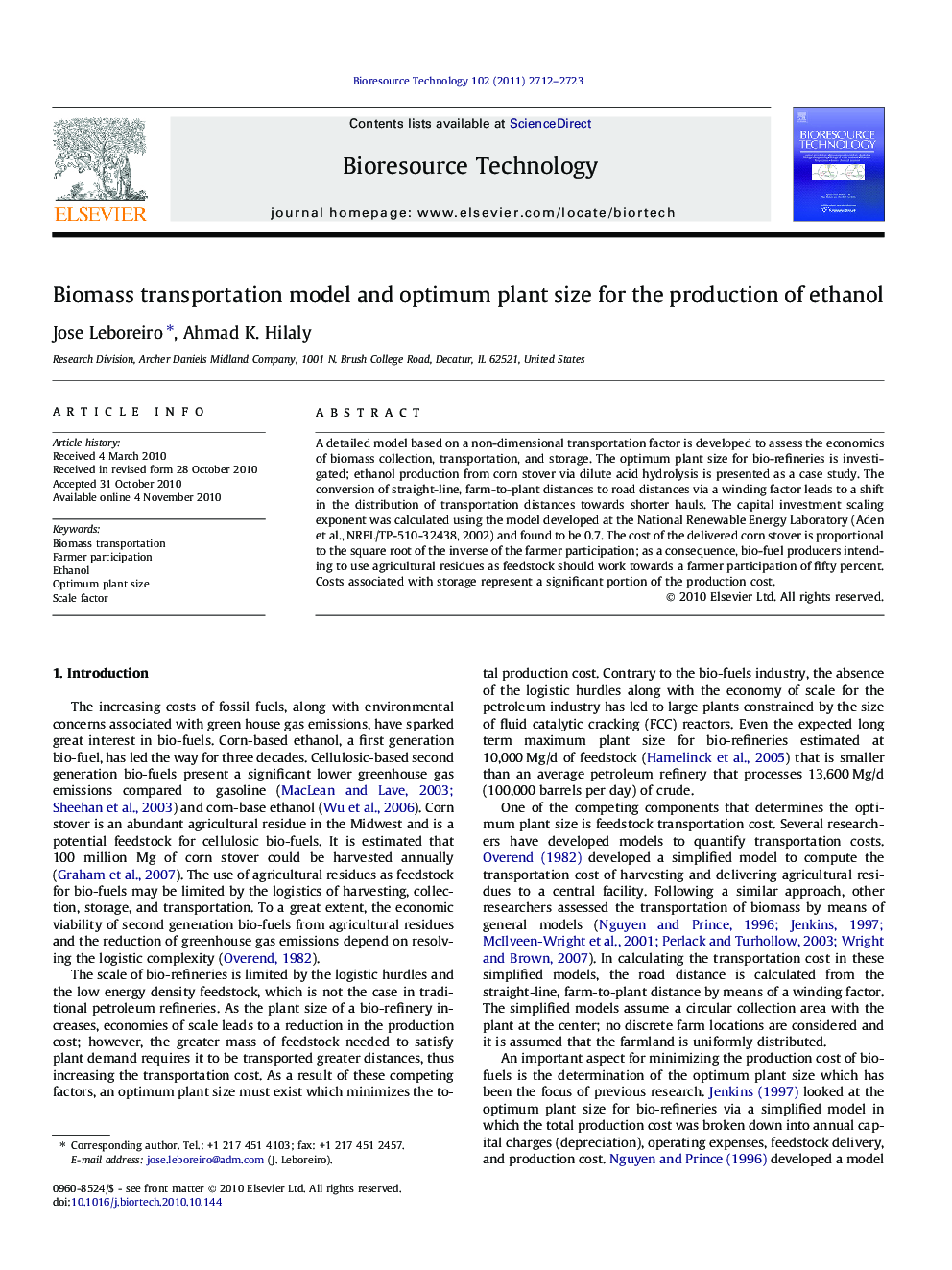| Article ID | Journal | Published Year | Pages | File Type |
|---|---|---|---|---|
| 10395432 | Bioresource Technology | 2011 | 12 Pages |
Abstract
A detailed model based on a non-dimensional transportation factor is developed to assess the economics of biomass collection, transportation, and storage. The optimum plant size for bio-refineries is investigated; ethanol production from corn stover via dilute acid hydrolysis is presented as a case study. The conversion of straight-line, farm-to-plant distances to road distances via a winding factor leads to a shift in the distribution of transportation distances towards shorter hauls. The capital investment scaling exponent was calculated using the model developed at the National Renewable Energy Laboratory (Aden et al., NREL/TP-510-32438, 2002) and found to be 0.7. The cost of the delivered corn stover is proportional to the square root of the inverse of the farmer participation; as a consequence, bio-fuel producers intending to use agricultural residues as feedstock should work towards a farmer participation of fifty percent. Costs associated with storage represent a significant portion of the production cost.
Related Topics
Physical Sciences and Engineering
Chemical Engineering
Process Chemistry and Technology
Authors
Jose Leboreiro, Ahmad K. Hilaly,
